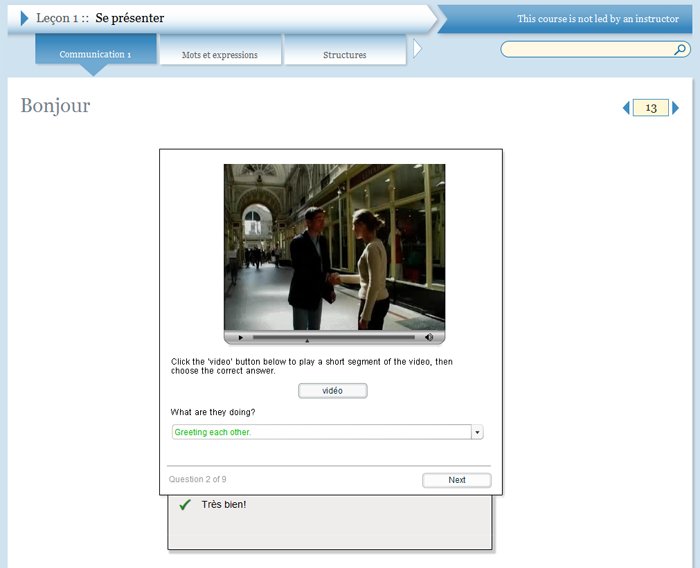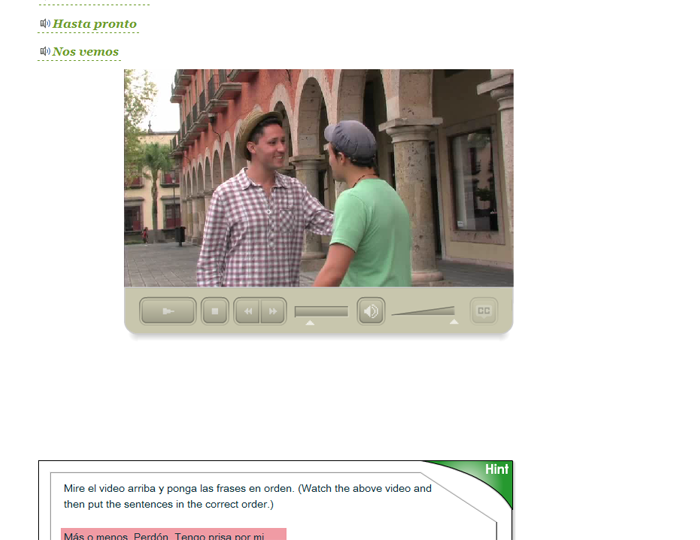Introductory logic course designed for students from a broad range of disciplines, from mathematics and computer science to drama and creative writing.
Learn about Open & Free OLI courses by visiting the “Open & Free features” tab below.
Logic & Proofs — Open & Free
- Description
- What students will learn
- Learning objectives by module
- Course outline
- Other course details
- System requirements
- Open & Free features
Description
Logic is a remarkable discipline. It is deeply tied to mathematics and philosophy, as correctness of argumentation is particularly crucial for these abstract disciplines. Logic systematizes and analyzes steps in reasoning: correct steps guarantee the truth of their conclusion given the truth of their premise(s); incorrect steps allow the formulation of counterexamples, i.e., of situations in which the premises are true, but the conclusion is false.
Recognizing (and having conceptual tools for recognizing) the correctness or incorrectness of steps is crucial in order to critically evaluate arguments, not just in philosophy and mathematics, but also in ordinary life. This skill is honed by working in two virtual labs. In the ProofLab you learn to construct complex arguments in a strategically guided way, whereas in the TruthLab the emphasis is on finding counterexamples systematically.
Who should take this course?
This is an introductory course designed for students from a broad range of disciplines, from mathematics and computer science to drama and creative writing. The highly interactive presentation makes it possible for any student to master the material. Concise multimedia lectures introduce each chapter; they discuss, in detail, the central notions and techniques presented in the text, but also articulate and motivate the learning objectives for each chapter.
Open & Free Version
The Open & Free Logic & Proofs course includes the first five chapters of Logic & Proofs, providing a basic introduction to sentential logic.
Independent Paid Version
A full version of Logic & Proofs, including both sentential and predicate logic, is also available without technical or instructor support to independent users, for a small fee. No credit is awarded for completing either the Open & Free Logic & Proofs course or the full, unsupported, Independent Paid version of the Logic & Proofs course.
Additional Course Details
In-Depth Description
Logic & Proofs is an introduction to modern symbolic logic, covering sentential and predicate logic (with identity). The course is highly interactive and engaging. It brings a fresh perspective to classical material by focusing on developing two crucial logical skills: strategic construction of proofs and the systematic search for counterexamples.
Concise multimedia lectures introduce each chapter of the course and discuss in detail central notions and techniques presented in the text. The introductory lectures articulate and motivate the learning objectives for each chapter.
LAB EXERCISES
The two crucial logical skills are developed via numerous exercises in two lab environments:
In the ProofLab, the main workbench of Logic & Proofs, students practice proof construction in a natural deduction framework. Their learning is supported by an intelligent and dynamic automated tutor. This tutor helps students, in a dialogue, to think through arguments in a strategic and systematic fashion. This Proof Tutor is making use of the automated proof search mechanism AProS; see the AProS site here.
In the TruthLab, the semantic counterpart to the ProofLab, students practice techniques for a semantic analysis of formulae and arguments. They begin with chasing truth up a parse tree, then complete truth-tables, and ultimately learn to build truth-trees for predicate formulae involving identity. The emphasis is on reading off counterexamples to invalid arguments from completed trees.
CONTENT STRUCTURE
Each chapter features both review materials and homework assignments, including quizzes and lab problems. The end-of-chapter quizzes (not included in the Open & Free version) and practice questions provide fully automated feedback to the student; the ample practice lab problems offer tutoring, while the problems in the chapter’s lab assignment do not, providing students with the opportunity to demonstrate mastery of the skills developed in completing the practice problems.
What students will learn
By the end of this course, students will have learned how to critically evaluate arguments, not just in philosophy and mathematics, but also in ordinary life. They will learn to:
- explain what an argument is, and determine whether or not a given passage constitutes an argument.
- identify the premises and conclusion of an argument, and represent the argument in standard form.
- determine whether a given argument is a bad or a good argument, and why this is the case.
- create diagrams that graphically depict the structure of arguments.
Learning objectives by module
Part 1: Introduction
- Chapter 1: Statements and Arguments
- Determine whether or not a sentence of English expresses a statement, and if so, to identify the statement expressed.
- Explain what a statement is, and discuss how statements are related to
sentences. - Explain what an argument is, and determine whether or not a givenpassage
constitutes an argument. - Identify the premises and conclusion of an argument, andrepresent the argument in standard form.
- List the criteria an argument must meet in order to be considereda good
argument, and explain why each criterion is necessary.
Part 2: Sentential Logic
- Chapter 2: Syntax and Symbolization
- Construct and identify formulae of sentential logic.
- Construct and use parse trees.
- Discern the logical structure of English sentences.
- Explain the grammar of the logical language of sentential logic.
- Symbolize English sentences as formulae of sentential logic.
- Chapter 3: Semantics
- Construct a truth-table for a given formula or argument.
- Determine the truth-value of a formula relative to a given truth-value
assignment. - Explain what a truth-value assignment is.
- Explain what tautological, contingent, and contradictory formulae are.
- Find a counterexample to an invalid argument, using a truth-table or truth-tree.
- Give the truth-conditions for the logical connectives.
- Use truth-tables to analyze arguments and formulae.
- Chapter 4: Derivations
- Apply and identify applications of rules of inference within a derivation.
- Establish the validity of rules of inference.
- Explain the structure of derivations.
- Chapter 5: Indirect Rules
- Apply and identify applications of the inference rules for negation.
- Explain the structure of indirect rules of inference.
- Find contradictions to use in applications of indirect rules.
- Chapter 6: Strategies and Derived Rules
- Apply and identify applications of derived rules.
- Approach proof construction problems in a strategic fashion.
- Provide explanations of and explain some significant properties of the logical
connectives.
- Chapter 7: Elementary Metamathematics
- Explain how a biconditional can be considered logically equivalent to a formula in disjunctive normal form.
- Explain the connection between truth-tables and Boolean circuits.
- Find a disjunctive normal form equivalent to any formula.
- Show that two formulae are logically equivalent just in case their biconditional
is a tautology.
Course outline
Preface
Logic & Proofs
PART 1: Introduction
Chapter 1: Statements and Arguments
PART 2: Sentential Logic
Chapter 2: Syntax and Symbolization
Chapter 3: Semantics
Chapter 4: Derivations
Chapter 5: Indirect Rules
Chapter 6: Strategies and Derived Rules
Chapter 7: Elementary Metamathematics
Resources
Other course details
System requirements
OLI system requirements, regardless of course:
- internet access
- an operating system that supports the latest browser update
- the latest browser update (Chrome recommended; Firefox, Safari supported; Edge and Internet Explorer are supported but not recommended)
- pop-ups enabled
- cookies enabled
Some courses include exercises with exceptions to these requirements, such as technology that cannot be used on mobile devices.
This course’s system requirements:
- none listed (subject to change)
Open & Free features
Open & Free Courses
- Open & Free OLI courses enable independent learners to study a subject on their own terms, at their leisure. Courses are:
- Self-guided.
- Self-paced.
- Self-supported.
- Open & Free courses include only the learning materials:
- No teacher.
- No tests.
- No college credit.
- No certificate of completion.
- *If your teacher gave you a Course Key, do not use an Open & Free course because your teacher will never see your work.






